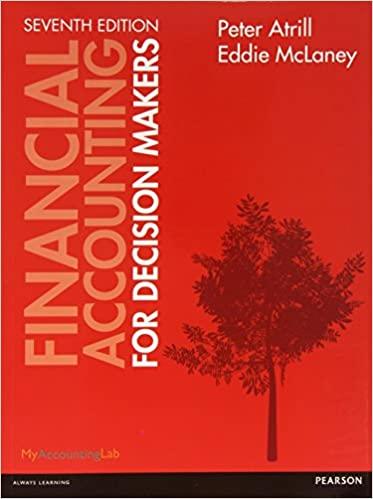Answered step by step
Verified Expert Solution
Question
1 Approved Answer
Use Excel Cougar Fabricators still has the same costs outlined in 1- Life Cycle Pricing but now wants to the determine the selling price using
 Use Excel
Use Excel
Step by Step Solution
There are 3 Steps involved in it
Step: 1

Get Instant Access to Expert-Tailored Solutions
See step-by-step solutions with expert insights and AI powered tools for academic success
Step: 2

Step: 3

Ace Your Homework with AI
Get the answers you need in no time with our AI-driven, step-by-step assistance
Get Started


